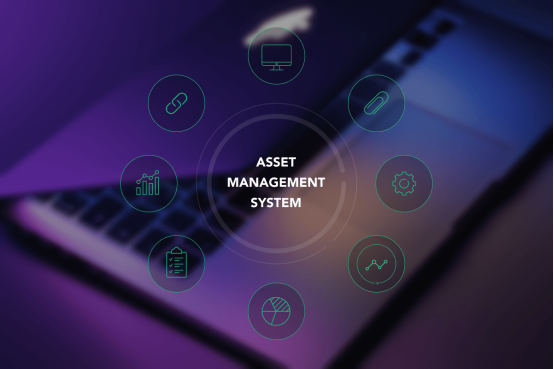In today's fast-paced business environment, organizations face a myriad of challenges including heightened competition and resource limitations. Effectively navigating through these issues necessitates innovative solutions that not only streamline operations but also optimize efficiency. Asset management software has emerged as an indispensable tool that empowers businesses to manage their resources adeptly while uncovering new growth opportunities.

Leveraging these technologies enables companies to protect their assets and enhance productivity, positioning them advantageously in a competitive marketplace. As we explore the transformative impact of asset management software, it becomes evident that these solutions are crucial for achieving long-term sustainability and success in business operations.
Understanding Asset Management Software
Asset management software is a comprehensive digital solution crafted to help organizations track, manage, and maintain their assets effectively. Its core functions encompass asset tracking, inventory management, and lifecycle management, allowing businesses to utilize their resources with increased efficiency and reduced operational costs.
Various forms of asset management software are tailored to distinct sectors; for example, IT asset management focuses on technology-related resources, whereas facilities management software oversees physical assets such as buildings and machinery. Each type serves to streamline processes while enhancing visibility into asset utilization.
Additionally, asset management software seamlessly integrates with existing business systems, including enterprise resource planning (ERP) and customer relationship management (CRM) platforms. This integration not only streamlines workflows but also facilitates data sharing, thereby improving decision-making. Ultimately, these offerings help organizations maximize the value of their assets and elevate operational efficiency.
Streamlining Business Operations
Asset management software serves as a pivotal catalyst for optimizing business processes, driving efficiency across multiple operational domains. By automating and refining workflows, companies unlock substantial performance enhancements. For instance, in the domain of inventory management, this software facilitates real-time tracking and management of stock levels. Such capabilities not only reduce excess inventory and associated costs but also improve order accuracy. A prime example is Company X, a manufacturing firm that utilized asset management software, resulting in a 20% reduction in inventory holding costs within the first year by enhancing its supply chain responsiveness.
Another significant area of impact is maintenance scheduling, where asset management software proves essential. By automating maintenance tasks and anticipating equipment failures from usage data, organizations can mitigate costly downtime. Company Y, operating in the healthcare sector, realized a 30% increase in equipment uptime after implementing a robust asset management solution. This advancement not only ensured the availability of medical equipment when needed but also significantly enhanced patient care.
These examples illustrate the myriad benefits businesses in diverse industries can harness by adopting asset management software, achieving measurable outcomes that translate into operational excellence and substantial cost savings.
Ensuring Resource Protection
In today’s intricate business environment, safeguarding both physical and digital assets is more critical than ever. Securing these resources helps prevent financial losses and ensures operational continuity while maintaining compliance with regulatory mandates. Asset management software plays a crucial role in this protective process by offering features such as risk management, compliance tracking, and robust data security measures.
With its risk management tools, organizations can identify potential threats to their assets, allowing for proactive interventions before issues escalate. Compliance tracking reinforces adherence to industry regulations, thus mitigating the risk of incurring costly penalties. Furthermore, data security features—such as encryption and user access controls—are vital in protecting sensitive information from breaches or unauthorized access.
Implementing effective resource management leads to tangible business benefits, including minimized asset loss, significant cost savings, and an enhanced organizational reputation. As risk management and compliance trends evolve, integrating cutting-edge asset management solutions becomes essential. Stakeholders increasingly demand heightened transparency and accountability in asset management, especially in light of the growing importance of cybersecurity. Consequently, businesses utilizing asset management software not only protect their resources but also cultivate trust with clients and partners, laying the groundwork for enduring success.
Harnessing Opportunities for Growth
In the current data-centric business landscape, asset management software acts as a key enabler for informed decision-making. By aggregating and analyzing vast quantities of data, these platforms empower organizations to make strategic choices rooted in real-time insights and trend analytics. For instance, companies can employ predictive analytics to anticipate future asset performance, optimizing resource allocation and bolstering profitability.
As businesses adopt these technologies, they not only refine operations but also align themselves for sustainable growth. Future tendencies in asset management indicate an increasing integration of AI and machine learning, further enhancing analytic capabilities and personalizing user experiences. The market for asset management solutions is poised for substantial expansion as organizations recognize the strategic benefits of leveraging technology not just for operational efficiency but also as a fundamental component of competitive strategy. In essence, asset management software transcends being a mere tool; it stands as a foundational element for uncovering new growth avenues.
Embracing the Future of Business Operations
The potential of asset management software to revolutionize modern business operations cannot be overstated. By optimizing efficiency, safeguarding resources, and driving growth, this technology positions organizations to excel in a rapidly changing market. As companies strive to maintain competitiveness, the decision to upgrade legacy systems or implement innovative solutions becomes crucial. By adopting advancements in asset management practices, businesses enhance their operational effectiveness, paving the way for future success. Explore the myriad options available in this evolving landscape today and take significant steps toward unlocking your business's full potential, as operational excellence emerges as the new standard.





